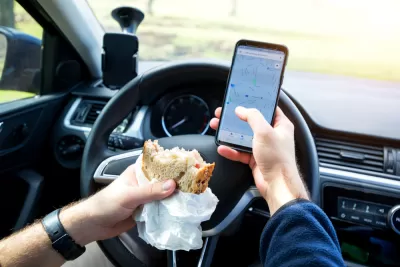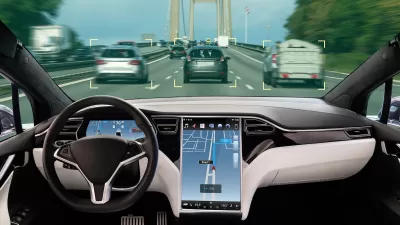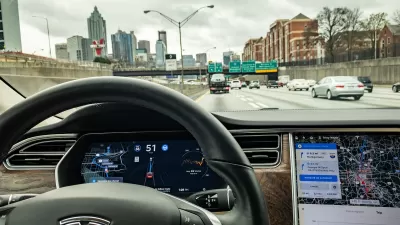Almost half of drivers using Tesla and GMC driver assist technology report feeling comfortable treating their cars as fully autonomous.

According to new research from the Insurance Institute for Highway Safety (IIHS), many Americans confuse driver assist systems with full self-driving modes, reports Rebecca Bellan in TechCrunch.
This was the conclusion of a survey that “explored habits, expectations and attitudes among regular users of General Motors Super Cruise, Nissan/Infiniti ProPILOT Assist and Tesla Autopilot.” The survey showed that “All three groups were found to be more likely to engage in non-driving related activities — like texting or eating — while using their systems than when driving manually.” Over half of Super Cruise users and 42 percent of Autopilot users “said they were comfortable treating their systems as self-driving.”
The information comes on the heels of multiple crashes involving Tesla cars using the Autopilot system. “The agency has opened a total 39 special investigations into Autopilot-related crashes since 2016, 37 of which are currently still open.” GMC’s Super Cruise was investigated twice during the same time period. “Last month, some Tesla drivers filed suit against the company for falsely advertising the autonomous capabilities of Autopilot and FSD, something California’s Department of Motor Vehicles has also recently accused Tesla of.”
Bella adds, “The study suggests that driver monitoring systems and ‘multifaceted, proactive user-centric safeguards’ are key to shaping proper behavior and understanding about drivers’ roles while using partial driving automation.”
FULL STORY: Many Americans treat driver assist systems like self-driving

Study: Maui’s Plan to Convert Vacation Rentals to Long-Term Housing Could Cause Nearly $1 Billion Economic Loss
The plan would reduce visitor accommodation by 25,% resulting in 1,900 jobs lost.

North Texas Transit Leaders Tout Benefits of TOD for Growing Region
At a summit focused on transit-oriented development, policymakers discussed how North Texas’ expanded light rail system can serve as a tool for economic growth.

Why Should We Subsidize Public Transportation?
Many public transit agencies face financial stress due to rising costs, declining fare revenue, and declining subsidies. Transit advocates must provide a strong business case for increasing public transit funding.

How to Make US Trains Faster
Changes to boarding platforms and a switch to electric trains could improve U.S. passenger rail service without the added cost of high-speed rail.

Columbia’s Revitalized ‘Loop’ Is a Hub for Local Entrepreneurs
A focus on small businesses is helping a commercial corridor in Columbia, Missouri thrive.

Invasive Insect Threatens Minnesota’s Ash Forests
The Emerald Ash Borer is a rapidly spreading invasive pest threatening Minnesota’s ash trees, and homeowners are encouraged to plant diverse replacement species, avoid moving ash firewood, and monitor for signs of infestation.
Urban Design for Planners 1: Software Tools
This six-course series explores essential urban design concepts using open source software and equips planners with the tools they need to participate fully in the urban design process.
Planning for Universal Design
Learn the tools for implementing Universal Design in planning regulations.
Ascent Environmental
Borough of Carlisle
Institute for Housing and Urban Development Studies (IHS)
City of Grandview
Harvard GSD Executive Education
Toledo-Lucas County Plan Commissions
Salt Lake City
NYU Wagner Graduate School of Public Service





























